- Home
- Arthur C. Clarke
The Lost Worlds of 2001 Page 3
The Lost Worlds of 2001 Read online
Page 3
* I once accused my friends in MGM's publicity department of having a special labor-saving key on their typewriters which, when pressed, automatically began to print out: "Never, in the history of motion pictures ...."
This, of course, is the reverse of the usual state of affairs. Most movies are adapted from already existing novels, preferably ones which have proved to be best sellers and so have a built-in box- office guarantee. (Good examples are Gone with the Wind and Doctor Zhivago.) Other movies are based on screenplays specifically written for them, and no novel version (or even-ugh!- "novelization") ever exists. All of Chaplin's films, Citizen Kane, and Lawrence of Arabia are in this category. They were conceived purely as movies from start to finish, the only thing that exists on paper is the screenplay and the subsequent shooting script.*
* The screenplay gives the dialogue, action, scenes, etc. in the order in which they will actually appear on the screen. But it would be absurd to film them in this order, so the shooting script groups together all the scenes involving the same locations, sets and actors.
Some directors of genius have even managed to dispense with these. Though it seems incredible, David Wark Griffiths is supposed to have carried Intolerance entirely in his head. I think that Stanley would like to have done the same with 2001, and would hesitate to say that, for him, it was theoretically impossible. But it was certainly impossible in practice-if only for the reason that he had to have a fairly complete treatment to show his backers. Banks and movie companies require more than a few notes on scraps of paper before they will disgorge their cherished millions.
Now a screenplay is not a work of art, though its production requires considerable skill. It bears somewhat the same relationship to a movie as the musical score does to a symphonic performance. There are people who can read a musical score and "hear" the symphony-but no two directors will see the same images when they read a movie script. The two-dimensional patterns of colored light involved are far more complex than the one-dimensional thread of sound-which can, in principle, be completely described on paper. A movie can never be pinned down in such a way, though the scriptwriter has to attempt this impossible feat. Unless the writer is the director, everything has to be specified in boring detail; no wonder that screenplays are almost as tedious to read as to write. John Fowles has put it very well: "Any novelist who has written scripts knows the appalling restrictions- obligatory detailing of the unnecessary-the cinema imposes. Writing a novel is like swimming in the sea; writing a film script is thrashing through treacle." ("Is the Novel Dead?"-Books, Autumn 1970).
Though I was only dimly aware of this in 1964, Stanley knew it very well. It was his suggestion that, before embarking on the drudgery of the script, we let our imaginations soar freely by developing the story in the form of a complete novel. Of course, to do this we would have to generate far more background than could ever be used in the final film. That wouldn't matter. Every good novelist "knows" much more than he writes down: every film maker should be aware of a larger universe than his script.
In theory, therefore, the novel would be written (with an eye on the screen) and the script would be derived from this. In practice, the result was far more complex; toward the end, both novel and screenplay were being written simultaneously, with feedback in both directions. Some parts of the novel had their final revisions after we had seen the rushes based on the screenplay based on earlier versions of the novel . . . and so on.
After a couple of years of this, I felt that when the novel finally appeared it should be "by Arthur Clarke and Stanley Kubrick; based on the screenplay by Stanley Kubrick and Arthur Clarke"-whereas the movie should have the credits reversed. This still seems the nearest approximation to the complicated truth.
After various false starts and twelve-hour talkathons, by early May 1964 Stanley agreed that "The Sentinel" would provide good story material. But our first concept-and it is hard now for me to focus on such an idea, though it would have been perfectly viable-involved working up to the discovery of an extraterrestrial artifact as the climax, not the beginning, of the story. Before that, we would have a series of incidents or adventures devoted to the exploration of the Moon and Planets. For this Mark I version, our private title (never of course intended for public use) was "How the Solar System Was Won."
So once more I went back to my stockpile of short stories, to find material which would fit into this pattern. I returned with five: "Breaking Strain" (from Expedition to Earth ); "Out of the Cradle, Endlessly Orbiting . . .", "Who's There?", "Into the Comet", and "Before Eden" (all from Tales of Ten Worlds). On May 28, 1964, I sold the lot to Stanley and signed an agreement to work on the projected movie. Our initial schedule was hilariously optimistic: writing script, 12 weeks; discussing it, 2 weeks; revising, 4 weeks; fixing deal, 4 weeks; visuals, art, 20 weeks; shooting, 20 weeks; cutting, editing, 20 weeks-a total of 82 weeks. Allowing another 12 weeks before release, this added up to 92, or the better part of two years. I was very depressed by this staggering period of time, since I was (as always) in a hurry to get back to Ceylon, it was just as well that neither of us could have guessed the project's ultimate duration-four years....
The rest of 1964 was spent brainstorming. As we developed new ideas, so the original conception slowly changed. "The Sentinel" became the opening, not the finale; and one by one, the other five short stories were discarded. A year later, deciding (not necessarily in this order) that (a) it wasn't fair to Stanley to make him pay for something he didn't need and (b) these stories might make a pretty good movie someday, I bought them back from him....
The announced title of the project, when Stanley gave his intentions to the press, was Journey Beyond the Stars. I never liked this, because there had been far too many science-fictional journeys and voyages. (Indeed, the innerspace epic Fantastic Voyage, featuring Raquel Welch and a supporting cast of ten thousand blood corpuscles, was also going into production about this time.) Other titles which we ran up and failed to salute were Universe, Tunnel to the Stars, and Planetfall. It was not until eleven months after we started-April 1965-that Stanley selected 2001: A Space Odyssey. As far as I can recall, it was entirely his idea.
Despite the unrelenting pressure of work (a mere twelve hours was practically a day off) I kept a detailed log of the whole operation. Though I do not wish to get bogged down in minutiae of interest only to fanatical Kubrickologists, perhaps these extracts may convey the flavor of those early days:-
May 28, 1964. Suggested to Stanley that "they" might be machines who regard organic life as a hideous disease. Stanley thinks this is cute and feels we've got something.
May 31. One hilarious idea we won't use. Seventeen aliens-featureless black pyramids-riding in open cars down Fifth Avenue, surrounded by Irish cops.
June 20. Finished the opening chapter, "View from the Year 2000," and started on the robot sequence.
July 1. Last day working at Time/Life completing Man and Space. Checked into new suite, 1008, at the Hotel Chelsea.
July 2-8. Averaging one or two thousand words a day. Stanley reads first five chapters and says "We've got a best seller here."
July 9. Spent much of afternoon teaching Stanley how to use the slide rule-he's fascinated.
July 11. Joined Stanley to discuss plot development, but spent almost all the time arguing about Cantor's Theory of Transfinite Groups. Stanley tries to refute the "part equals the whole" paradox by arguing that a perfect square is not necessarily identical with the integer of the same value. I decide that he is a latent mathematical genius.
July 12. Now have everything-except the plot.
July 13. Got to work again on the novel and made good progress despite the distraction of the Republican Convention.
July 26. Stanley's birthday. Went to the Village and found a card showing the Earth coming apart at the seams and bearing the inscription: "How can you have a Happy Birthday when the whole world may blow up any minute?"
July 28. Stanley: "What we want is a sm
ashing theme of mythic grandeur."
August 1. Ranger VII impacts on moon. Stay up late to watch the first TV closeups. Stanley starts to worry about the forthcoming Mars probes. Suppose they show something that shoots down our story line? [Later he approached Lloyd's of London to see if he could insure himself against this eventuality.]
August 6. Stanley suggests that we make the computer female and call her Athena.
August 17. We've also got the name of our hero at last- Alex Bowman. Hurrah!
August 19. Writing all day. Two thousand words exploring Jupiter's satellites. Dull work.
September 7. Stanley quite happy: "We're in fantastic shape." He has made up a 100-item questionnaire about our astronauts, e.g. do they sleep in their pajamas, what do they eat for breakfast, etc.
September 8. Upset stomach last night. Dreamed I was a robot, being rebuilt. In a great burst of energy managed to redo two chapters. Took them to Stanley, who was very pleased and cooked me a fine steak, remarking: "Joe Levine doesn't do this for his writers."
September 26. Stanley gave me Joseph Campbell's analysis of the myth The Hero with a Thousand Faces to study. Very stimulating.
September 29. Dreamed that shooting had started. Lots of actors standing around, but I still didn't know the story line.
October 2. Finished reading Robert Ardrey's African Genesis. Came across a striking paragraph which might even provide a title for the movie: "Why did not the human line become extinct in the depths of the Pliocene? . . . we know that but for a gift from the stars, but for the accidental collision of ray and gene, intelligence would have perished on some forgotten African field." True, Ardrey is talking about cosmic-ray mutations, but the phrase "A gift from the stars" is strikingly applicable to our present plot line.
October 6. Have got an idea which I think is crucial. The people we meet on the other star system are humans who were collected from Earth a hundred thousand years ago, and hence are virtually identical with us.
October 8. Thinking of plot all morning, but after a long walk in the sun we ended up on the East River watching the boats. We dumped all our far-fetched ideas-now we're settling for a Galactic Peace Corps and no blood and thunder.
October 17. Stanley has invented the wild idea of slightly fag robots who create a Victorian environment to put our heroes at their ease.
November 20. Went to Natural History Museum to see Dr. Harry Shapiro, head of Anthropology, who took a poor view of Ardrey. Then had a session with Stan, arguing about early man's vegetarian versus carnivorous tendencies. Stan wants our visitors to turn Man into a carnivore; I argued that he always was. Back at the Chelsea, phoned Ike Asimov to discuss the biochemistry of turning vegetarians into carnivores.
November 21. Read Leakey's Adam's Ancestors. Getting rather desperate now, but after six hours' discussion Stan had a rather amusing idea. Our E. T.'s arrive on Earth and teach commando tactics to our pacifistic ancestors so that they can survive and flourish. We had an entertaining time knocking this one around, but I don't think it's viable.
November 22. Called Stan and said I didn't think any of our flashback ideas were any good. He slowly talked me out of this mood, and I was feeling more cheerful when I suddenly said: "What if our E. T.'s are stranded on Earth and need the ape-men to help them?" This idea (probably not original, but what the hell) opened up whole new areas of plot which we are both exploring.
November 23. Stanley distracted by numerous consultations with his broker, and wants my advice on buying COMSAT.
December 10. Stanley calls after screening H. G. Wells' Things to Come, and says he'll never see another movie I recommend.
December 21. Much of afternoon spent by Stanley planning his Academy Award campaign for Dr. Strangelove. I get back to the Chelsea to find a note from Allen Ginsberg asking me to join him and William Burroughs at the bar downstairs. Do so thankfully in search of inspiration.
December 24. Slowly tinkered with the final pages, so I can have them as a Christmas present for Stanley.
December 25. Stanley delighted with the last chapters, and convinced that we've extended the range of science fiction. He's astonished and delighted because Bosley Crowther of the New York Times has placed Dr. S on the 'Ten Best Films" list, after attacking it ferociously all year. I christen Bosley "The Critic Who Came In from the Cold."
From these notes, it would appear that by Christmas 1964, the novel was essentially complete, and that thereafter it would be a fairly straightforward matter to develop the screenplay. We were, indeed, under that delusion-at least, I was. In reality, all that we had was merely a rough draft of the first two-thirds of the book, stopping at the most exciting point. We had managed to get Bowman into the Star Gate, but didn't know what would happen next, except in the most general way. Nevertheless, the existing manuscript, together with his own salesmanship, allowed Stanley to set up the deal with MGM and Cinerama, and "Journey Beyond the Stars" was announced with a flourish of trumpets.
Through the spring of 1965, we continued to revise and extend the novel, and threw away-again and yet again- whole sections which we had once imagined to be final and complete. All this time, Stanley was also hiring staff, checking designs, negotiating with actors and technicians, and coping with the millions of other problems which arise in the production of even the most straightforward movie. The rush of events became far too hectic to enter more than a small fraction of them in my log, and few of them (luckily) concerned me directly. My primary job was still polishing the novel, though I was constantly involved in technical discussions with the artists and production staff. (Sometimes with disastrous results; see entry for November 10, below.)
February 9, 1965. Caught Dali on TV, painting in a Fifth Avenue store window to promote Fantastic Voyage. Reported this to Stanley, who replied: "Don't worry- we've already reserved a window for you."
March 8. Fighting hard to stop Stan from bringing Dr. Poole back from the dead. I'm afraid his obsession with immortality has overcome his artistic instincts.
April 6. To COMSAT Headquarters, Washington, for launch of first commercial communications satellite, Early Bird." Introduced to Vice-President Humphrey, who is also Chairman of the Space Council, and told him we were spending ten million dollars to publicize space. Added that one character in the movie would be the Chairman of the Space Council . . . thirty years from now. "Oh," said H. H. H. at once, "I still intend to be chairman then."
April 12. Much excitement when Stanley phones to say that the Russians claim to have detected radio signals from space. Rang Walter Sullivan at the New York Times and got the real story-merely fluctuations in Quasar CTA 102.
April 14. Reception at Harcourt, Brace and World. Those present included Bill Jovanovich (president), Jeremy Bernstein (New Yorker Magazine), Dennis Flanagan (Scientific American), Dr. Robert Jastrow (Goddard Space Center), Stanley and Christiane Kubrick, Al Rosenfeld (Science Editor, Life), Sylvester (Pat) Weaver, Scott Meredith and many other friends. There was a general belief that the party was to celebrate Harcourt's publication of Journey Beyond the Stars, but I explained that this was not definite, and depended upon the size of the mortgage they could raise on the building.
April 19. Went up to the office with about three thousand words Stanley hasn't read. The place is really humming now-about ten people working there, including two production staff from England. The walls are getting covered with impressive pictures and I already feel quite a minor cog in the works.
Some psychotic who insists that Stanley must hire him has been sitting on a park bench outside the office for a couple of weeks, and occasionally comes to the building. In self-defense, Stan has secreted a large hunting knife in his briefcase.
May 1. Found that a fire had broken out on the third floor of the Chelsea. Waited anxiously in the lobby while the firemen dealt with it . . . visions of the only complete copy of the MS going up in smoke....
May 2. Completed the Universe" chapter-will soon have all Part Three ready for typing, hurra
h.... Stan phoned to say he liked the "Floating Island" sequence. Strange and encouraging how much of the material I thought I'd abandoned fits in perfectly after all.
May 3. Finished first draft of the runaway antenna sequence.
May 25. Now Stanley wants to incorporate the Devil theme from Childhood's End....
June 7. Bad book review in Tribune-says I should stick to science exposition and am an amateur at fiction.
Late June. Read Victor Lyndon's production notes; they left me completely overwhelmed. Glad that's not my job. One scene calls for four trained warthogs.
On that note, more or less, I returned to Ceylon after an absence of over a year, and subsequently rejoined Stanley at the MGM studios at Boreham Wood, fifteen miles north of London, in August. His empire had now expanded vastly, the art department was in full swing, and impressive sets were being constructed. My time was now equally divided between the apparently never-ending chore of developing ideas with Stanley, polishing the novel, and almost daily consultations at the studio.
August 25. Suddenly realized how the novel should end, with Bowman standing beside the alien ship.

 Time's Eye
Time's Eye The Sentinel
The Sentinel Prelude to Space
Prelude to Space Earthlight (Arthur C. Clarke Collection)
Earthlight (Arthur C. Clarke Collection) 2001: A Space Odyssey
2001: A Space Odyssey Against the Fall of Night
Against the Fall of Night Glide Path
Glide Path The Lost Worlds of 2001
The Lost Worlds of 2001 The Trigger
The Trigger Reach for Tomorrow
Reach for Tomorrow Islands in the Sky
Islands in the Sky The Songs of Distant Earth
The Songs of Distant Earth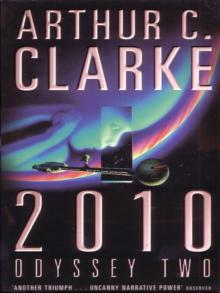 2010: Odyssey Two
2010: Odyssey Two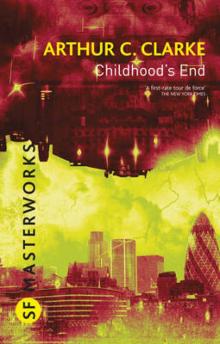 Childhood's End
Childhood's End 3001: The Final Odyssey
3001: The Final Odyssey The Fountains of Paradise
The Fountains of Paradise Rama: The Omnibus
Rama: The Omnibus The Hammer of God
The Hammer of God Beyond the Fall of Night
Beyond the Fall of Night Tales From Planet Earth
Tales From Planet Earth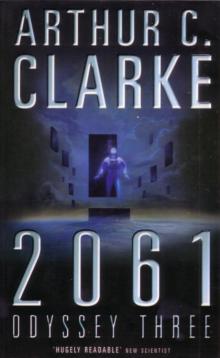 2061: Odyssey Three
2061: Odyssey Three Tales From the White Hart
Tales From the White Hart The City and the Stars/The Sands of Mars
The City and the Stars/The Sands of Mars The Star
The Star Imperial Earth
Imperial Earth The Light of Other Days
The Light of Other Days Firstborn
Firstborn The Other Side of the Sky
The Other Side of the Sky Cradle
Cradle The Wind From the Sun
The Wind From the Sun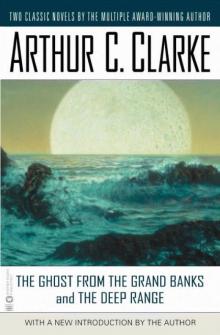 The Ghost From the Grand Banks and the Deep Range
The Ghost From the Grand Banks and the Deep Range The Deep Range
The Deep Range Expedition to Earth
Expedition to Earth A Fall of Moondust
A Fall of Moondust Dolphin Island (Arthur C. Clarke Collection)
Dolphin Island (Arthur C. Clarke Collection) Richter 10
Richter 10 The City and the Stars
The City and the Stars Tales of Ten Worlds
Tales of Ten Worlds Dolphin Island
Dolphin Island Expedition to Earth (Arthur C. Clarke Collection: Short Stories)
Expedition to Earth (Arthur C. Clarke Collection: Short Stories) Sunstorm
Sunstorm Rendezvous with Rama
Rendezvous with Rama The Collected Stories of Arthur C. Clarke
The Collected Stories of Arthur C. Clarke Trouble with the Natives
Trouble with the Natives Rama Revealed r-4
Rama Revealed r-4 The Sixth Science Fiction Megapack
The Sixth Science Fiction Megapack Firstborn to-3
Firstborn to-3 The Ghost from the Grand Banks
The Ghost from the Grand Banks Into the Comet
Into the Comet The Fires Within
The Fires Within 2061: Odyssey 3
2061: Odyssey 3 The Ninth Science Fiction Megapack
The Ninth Science Fiction Megapack The Coast of Coral
The Coast of Coral The Ghost from the Grand Banks (Arthur C. Clarke Collection)
The Ghost from the Grand Banks (Arthur C. Clarke Collection) The Space Trilogy
The Space Trilogy A Meeting With Medusa
A Meeting With Medusa 2001: A Space Odyssey (Arthur C. Clarke Collection: The Odyssey)
2001: A Space Odyssey (Arthur C. Clarke Collection: The Odyssey) Islands in the Sky (Arthur C. Clarke Collection)
Islands in the Sky (Arthur C. Clarke Collection) Rama II r-2
Rama II r-2 Glide Path (Arthur C. Clarke Collection)
Glide Path (Arthur C. Clarke Collection) The Sixth Science Fiction Megapack: 25 Classic and Modern Science Fiction Stories
The Sixth Science Fiction Megapack: 25 Classic and Modern Science Fiction Stories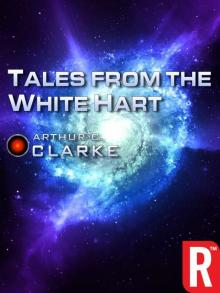 Tales from the White Hart (Arthur C. Clarke Collection: Short Stories)
Tales from the White Hart (Arthur C. Clarke Collection: Short Stories) The Reluctant Orchid
The Reluctant Orchid